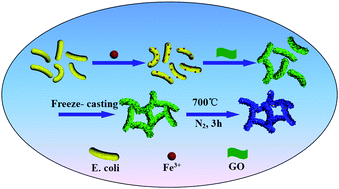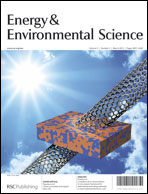Bacteria promoted hierarchical carbon materials for high-performance supercapacitor†
Abstract
To keep up with the appeal for energy-saving and environmental protection, scientists have turned to nature for inspiration in developing relatively green approaches for the fabrication of novel materials. With this in mind, we demonstrate herein a green and facile method for the synthesis of bio-inspired hierarchical carbon materials with nanoscale to microscale porous structures. It is achieved by the combination of the assembly of graphene oxide on the surface of bacteria with a freeze-casting technique. More importantly, the novel multi-level architectures and the bacteria component endow these hierarchical carbon materials with desirable specific surface areas (181.6 m2 g−1), rich porosity (0.74 cm3 g−1) and abundant foreign atoms. These structural and compositional advantages result in higher specific capacitance (327 F g−1) compared with previous reported carbon materials at the same current density, as well as large power density and good stability when the as-prepared materials are used as supercapacitor


 Please wait while we load your content...
Please wait while we load your content...